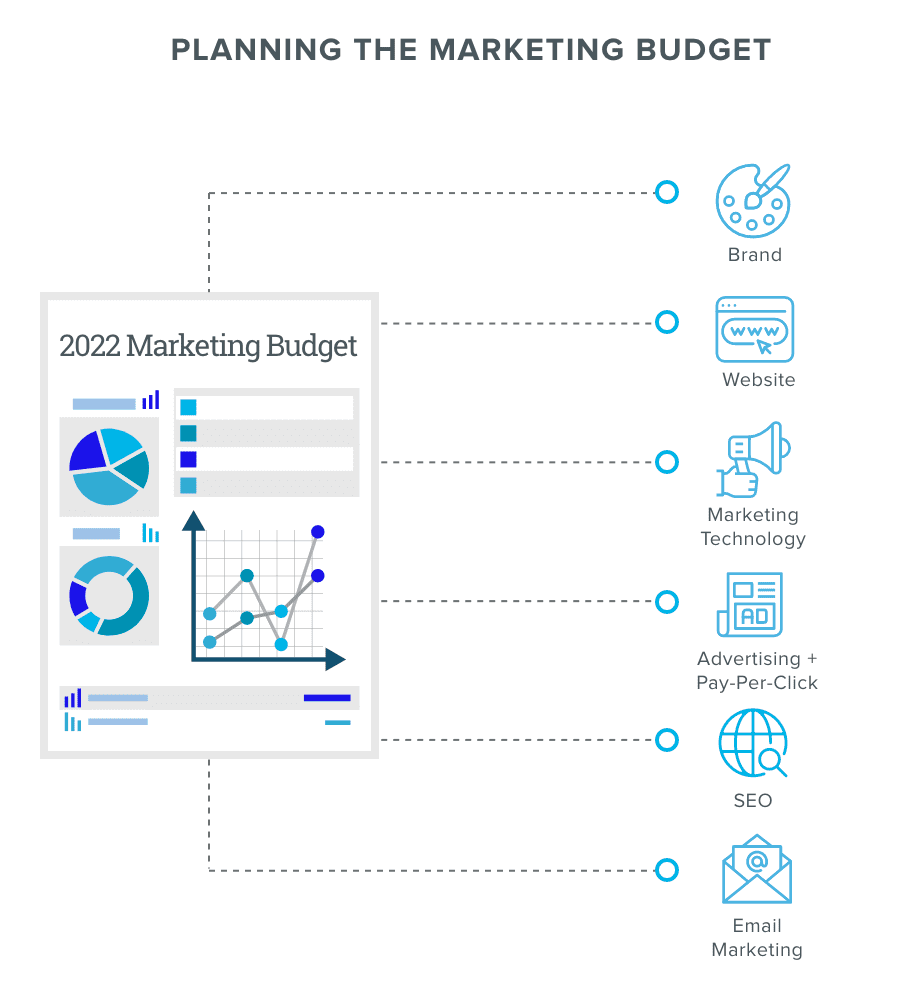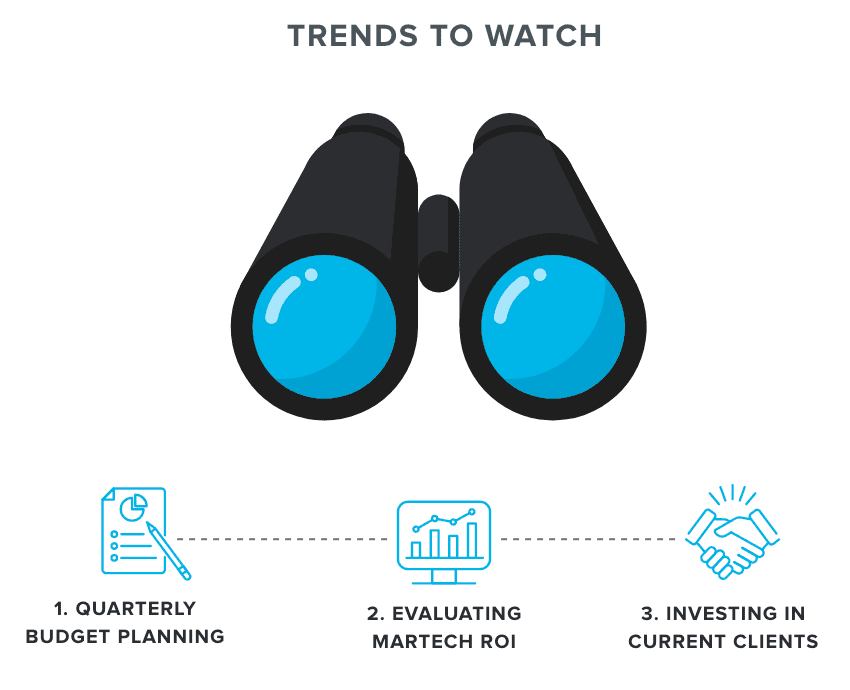After the comprehensive shifts of 2020, digital marketing spending
increased by 88%
Heading into 2021, B2B firms faced a marketplace that had been fundamentally transformed. Companies looking to invest marketing budget in vital services could only apply digital tools to find the right provider for their needs. At the same time, marketing managers had to optimize multiple digital channels to convert an audience of users into right-fit prospects.
Consequently, B2B firms doubled down on their digital investments — literally. According to a Google study, marketers doubled their use of digital during the pandemic compared with traditional media and in-person events. After the comprehensive shifts of 2020, digital marketing spending increased by 88%.
Now, as you begin planning your firm’s marketing budget for the next year, you face a dilemma. Can you afford to pull back on your investment as a return to pre-pandemic conditions looks more likely?
Ultimately, the answer will in part depend on your firm and its industry. But the value of digital marketing to your business shows every sign of sticking around.
Consider Current Trends When Determining Your B2B Firm’s Digital Marketing Budget
On the surface, B2B firms increasing their investment in digital can be seen as a temporary response to extraordinary circumstances. Lacking any other viable options throughout the pandemic, you had to invest in the platforms that could accommodate a challenging climate.
However, even as pandemic restrictions have lifted, digital is still booming. A McKinsey study showed decision makers on both sides of B2B engagements haven’t just adapted to a virtual sales process; they prefer it.

As a CMO, your greatest responsibilities are to facilitate growth while establishing a competitive advantage for your firm. Given the realities of an evolved market, your firm’s health depends on continued digital investment.
Key Factors in Planning Your Digital Marketing Budget
Prior to the pandemic, a survey of CMOs estimated that 11.3% of a firm’s revenue was allocated toward marketing. Though overall spending fell in 2020, marketing managers increased their investment in digital across an assortment of tools and channels.
Heading into the new year, you should view 10% of your overall revenue as a solid baseline for your marketing budget. Your firm’s circumstances and needs will vary, but your digital marketing investments should encompass six critical areas:

-
Brand
Your brand must consistently stand apart in a rapidly changing B2B tech marketplace. You should conduct a visual brand audit each year to monitor and respond to changes in the competitive landscape.
-
Website
From evaluating critical KPIs to adding site features to improve lead generation, you need to ensure your site continues to perform well for your business.
-
Marketing Technology
Platforms such as Marketmuse, Semrush, and Google Data Studio are just a few tools worth incorporating to enhance your marketing.
-
Advertising and Pay-Per-Click
Expenditures through Google Ads and other PPC platforms will help your firm reach the audience it needs and raise brand awareness.
-
SEO
Investing in SEO enhancements either internally or with the help of an outside agency can help your firm rank higher on search engine results pages (SERPs).
-
EMAIL MARKETING
Tools like HubSpot and Act-On offer worthy investments to enhance your firm’s email and marketing automation efforts.
The decision of how to allocate your marketing budget across multiple channels and priorities will ultimately depend on your firm. Once you evaluate your company’s positioning, market trends, and the ROI from previous marketing expenditures, you’ll be positioned to plan your most pressing needs in the coming year.
3 Trends to Watch in Planning Your B2B Marketing Strategy for the New Year
The unprecedented events of 2020 proved that there’s no way to predict what comprehensive market shifts lie ahead. However, even as some level of business-as-usual seems possible for the B2B tech industry, your firm should apply a few lessons from the past couple of years.

1. Quarterly Planning Improves Agility in Marketing Budgets
As the past year proved, dramatic shifts can happen at any time. Whether your firm needs to navigate the sudden impact of a pandemic or a new competitor entering your market, you need to be flexible with your marketing expenditures.
Consider planning quarterly budgets that allow for consistent evaluations to ensure your efforts are paying off. Just as your market will not remain static, your customers’ habits will shift as well. You have to ensure you have the ability to adjust quickly when changes arrive.
2. Evaluating Marketing Technology Investments Are Vital
From deploying site analytics to monitoring customer behavior to ensuring your site performs at a high level, you have an assortment of options when it comes to improving your firm’s marketing. But for all the tools at your disposal, you need to regularly monitor your KPIs to ensure you’re seeing the return your business needs.
Given the demands of the B2B marketplace, a lot of firms make considerable investments into marketing initiatives while lacking any insight into their performance or success. In this day and age, you need the ability to change tactics quickly and ensure every cost in your marketing budget delivers a measurable benefit.
3. Invest in Your Current Clients to Raise Retention Rates
The next new customer is too often seen as the primary focus in marketing strategies. But just as your firm dedicates resources toward new business, you should ensure that existing clients receive comparable investment.
Market conditions change rapidly, especially in the B2B tech industry. When your firm is navigating an unstable climate, your existing clients can provide a lifeline. From customer service to self-service support tools, your firm should invest in digital experiences that prove your firm’s value to clients. You can’t ignore the value of ongoing client relationships and retention as you plan your budget for the coming year.
As you plan to allocate your marketing dollars for the coming year, you need to understand where your firm stands and where it needs to go. Though you can’t fully prepare for the unexpected, these steps will help ensure your firm is positioned to weather whatever lies ahead.






